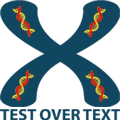From Cradle to Grave: A Metaphorical Life of Requirements

In business analysis, one of the most debated and least standardized areas is the requirements lifecycle. Unlike project lifecycles or software development lifecycles, there is no single agreed-upon path that every requirement must follow. Even the BABOK® Guide (3rd Edition) — the global reference for business analysts — avoids publishing a strict requirements lifecycle diagram. The reason is simple: requirements do not live one universal life. They emerge, evolve, and expire in different ways depending on the project, organization, and methodology.
To make this challenge more approachable, we created a metaphorical model called “From Cradle to Grave: The Lifecycle of a Requirement.” This visualization aligns the evolution of requirements with the stages of human life. Just as a person is born, grows, matures, changes, and eventually passes away, so too do requirements move through states such as being defined, specified, modeled, validated, verified, approved, prioritized, implemented, changed, maintained, and finally retired or “died.”
This metaphor makes it easier to explain the journey of requirements to stakeholders who may not be familiar with the technical language of business analysis. By anchoring abstract states to something familiar — human life — the concept becomes more engaging and memorable.
At the same time, this model highlights an important axiom for our profession:
There is no universal lifecycle for requirements.
There are only states that requirements may pass through — fully, partially, or repeatedly — depending on context.
This axiom frees business analysts from forcing artificial sequences. Instead, we can adapt the requirements lifecycle flexibly, acknowledging that requirements may skip stages, loop back, or take unique paths.
“From Cradle to Grave: A Metaphorical Life of Requirements” is not a rigid framework, but a conversation starter — one that bridges the gap between analysis and storytelling.

Other Business Analysis Articles:

